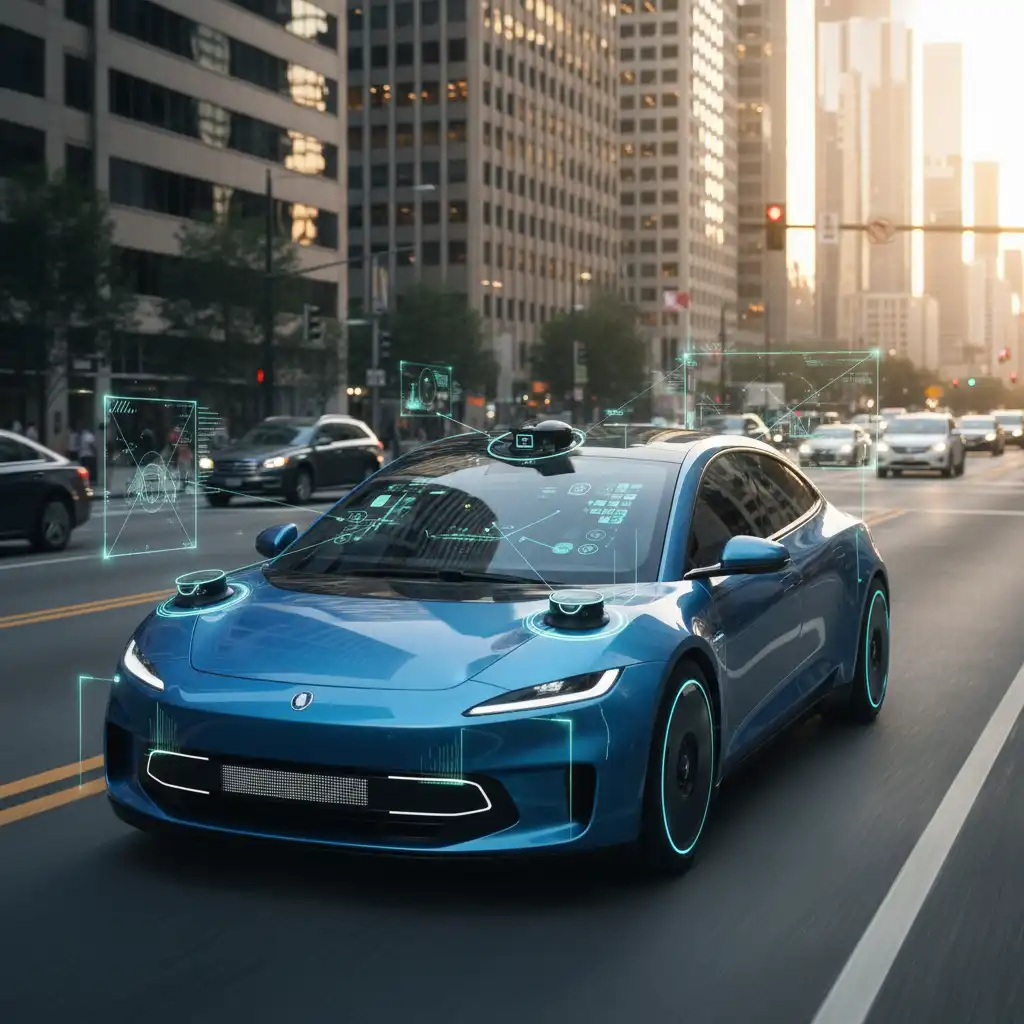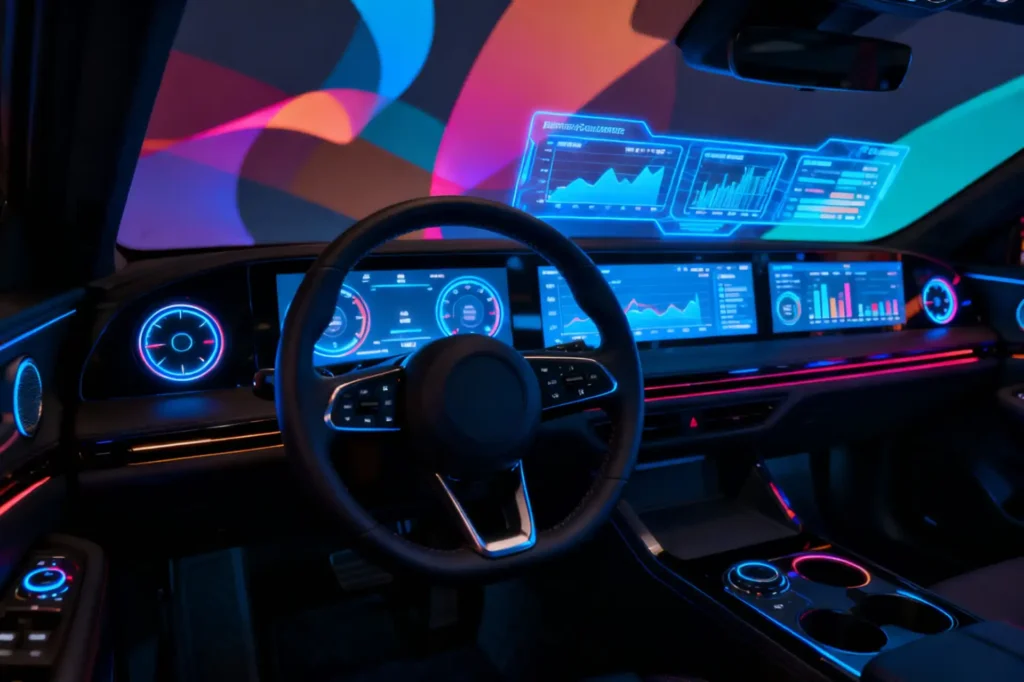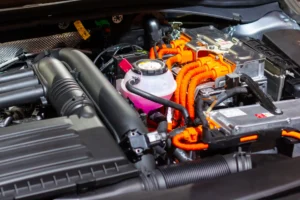The global automotive industry is entering its most transformative decade yet, and artificial intelligence (AI) is leading the charge. From smarter navigation to self-learning engines, AI in the automotive industry is reshaping how we design, build, and drive vehicles. The cars of tomorrow won’t just take you from one place to another—they’ll learn from you, adapt to your habits, and keep you safer on the road than ever before.
AI: The New Engine of Innovation
For over a century, automakers have competed on horsepower, design, and reliability. Today, the competition has shifted to computing power. AI now serves as the “brain” of modern cars, managing systems that control everything from adaptive cruise control to predictive diagnostics. This transformation isn’t just a trend—it’s the foundation of a smarter, safer, and more connected driving experience.
Major manufacturers like Ford, General Motors, Toyota, and Tesla are investing billions in AI-driven research. The goal is clear: to create vehicles that understand their environment as well as—or even better than—human drivers. With AI, cars are no longer static machines; they are dynamic systems capable of constant learning and improvement.
How AI is Driving the Future of Cars
Artificial intelligence processes data from cameras, radar, and sensors, allowing vehicles to “see” the road and make decisions in real time. This capability forms the backbone of today’s advanced driving systems and autonomous technology. Here are some ways AI is already revolutionizing driving:
- Advanced Driver Assistance Systems (ADAS): AI powers features such as lane-keeping assist, automatic emergency braking, and blind-spot detection, significantly reducing human error.
- Predictive Maintenance: AI monitors vehicle health, predicting mechanical issues before they happen. This saves owners money and helps prevent dangerous breakdowns.
- Smart Navigation: AI analyzes live traffic and weather data to suggest the fastest and safest routes, improving efficiency and reducing driver fatigue.
- Driver Behavior Learning: Some cars can now adjust steering sensitivity, throttle response, and climate control based on each driver’s habits.
- Voice and Gesture Control: AI-enabled infotainment systems respond to natural speech, hand motions, and even facial recognition for hands-free convenience.
AI and Safety: Making Roads Smarter
Safety remains one of the strongest arguments for AI adoption. The National Highway Traffic Safety Administration (NHTSA) reports that human error contributes to over 90% of road accidents. AI minimizes these risks through faster reaction times and predictive awareness. A car equipped with AI can detect potential hazards—such as a pedestrian stepping off the curb—milliseconds before a human can respond.
Systems like Tesla’s Autopilot, GM’s Super Cruise, and Ford’s BlueCruise exemplify how AI-driven features are saving lives. Combined with 360-degree sensors and LIDAR scanning, vehicles can identify obstacles and calculate safe maneuvers in real time. The goal is not to replace drivers entirely, but to assist them in making better, quicker, and safer decisions.
AI and Electric Vehicles: A Perfect Match
Electric vehicles (EVs) and AI go hand in hand. Managing battery life, optimizing energy use, and planning efficient routes all rely on advanced data analysis. The Tesla Model S and Toyota Prius Hybrid use AI to learn from driver behavior—adjusting power output, regenerative braking, and even climate control to maximize range.
Additionally, AI assists in battery diagnostics, predicting degradation and recommending optimal charging cycles. In the near future, EVs will use AI to communicate with charging networks, reserving available chargers and balancing grid loads automatically. This “vehicle-to-infrastructure” communication represents the next phase of smart mobility.
Manufacturing and Design: The Smart Factory Revolution

AI is not only revolutionizing cars themselves—it’s transforming how they’re made. In manufacturing, AI-powered robots perform precision tasks, inspect components for defects, and ensure quality consistency. Factories run predictive analytics to schedule maintenance before downtime occurs, improving productivity and sustainability.
AI-driven design tools also enable automakers to test virtual prototypes long before a physical model exists. Engineers can simulate crash tests, aerodynamics, and fuel efficiency digitally, drastically reducing costs and speeding up innovation cycles. Companies like BMW and Ford are already operating “digital twin” factories—virtual versions of their real-world facilities that constantly analyze data to improve efficiency.
The Road to Self-Driving Cars
Autonomous vehicles (AVs) are the most ambitious application of AI in the automotive industry. Full autonomy (known as Level 5) remains a work in progress, but Level 2 and Level 3 systems—like Tesla’s Autopilot and Mercedes-Benz Drive Pilot—are already on public roads. These cars can handle highway driving, maintain safe distances, and park themselves with minimal human input.
AI algorithms process enormous amounts of sensory data every second. This includes object recognition (pedestrians, signs, and other vehicles), trajectory prediction, and decision-making under uncertain conditions. Every mile driven improves these systems through continuous machine learning, bringing us closer to the dream of fully autonomous transportation.
Challenges and Ethical Questions
Despite the excitement, AI also brings challenges. One key issue is liability—if an AI-controlled car causes an accident, who’s responsible: the driver, the manufacturer, or the software provider? Regulators and insurers are still debating how to adapt legal frameworks to these new realities.
Another concern is cybersecurity. Connected vehicles are essentially mobile computers, and they’re vulnerable to hacking. To counter this, manufacturers are developing AI-based cybersecurity systems capable of detecting and isolating suspicious network activity before it becomes a threat.
Privacy is also under scrutiny. With cars collecting vast amounts of data about drivers, governments and advocacy groups are pushing for clearer policies on how that data is stored and shared.
AI Beyond Driving: Personalization and Connectivity

AI extends beyond safety and performance—it’s redefining the in-car experience. Imagine stepping into your car and finding the seat, mirrors, and temperature perfectly adjusted to your preferences. Your favorite music begins to play automatically, and your navigation system suggests the fastest route to work based on live traffic data. This isn’t science fiction—it’s already available in AI-equipped vehicles from BMW, Mercedes, and Tesla.
Even insurance companies are using AI to analyze driving behavior. Safe drivers can receive discounts based on real-world data collected from telematics systems. Meanwhile, ride-sharing and logistics companies use AI to optimize routes, reduce emissions, and enhance fleet efficiency.
The Next Decade: AI on Every Road
Experts predict that by 2035, nearly every new car sold will integrate AI in some form. From advanced safety assistance to predictive maintenance and personalized experiences, AI will become as fundamental as the internal combustion engine once was.
Automakers are also exploring AI for sustainability. By optimizing energy use, reducing emissions, and improving recycling efficiency in production, AI supports the industry’s global goal of achieving carbon neutrality by mid-century.
Conclusion: A Smarter, Safer, and More Connected Future
The rise of AI in the automotive industry is more than a technological evolution—it’s a complete reinvention of mobility. Cars are becoming intelligent partners that protect, assist, and learn from their drivers. The fusion of artificial intelligence, electric mobility, and connected technology marks the beginning of a transportation revolution that’s faster, safer, and greener.
To dive deeper into the technology shaping this future, check out our related articles:
The Future of Electric Vehicles: What Drivers Need to Know in 2025 and
Top Car Safety Features Every Driver Should Have in 2025.



